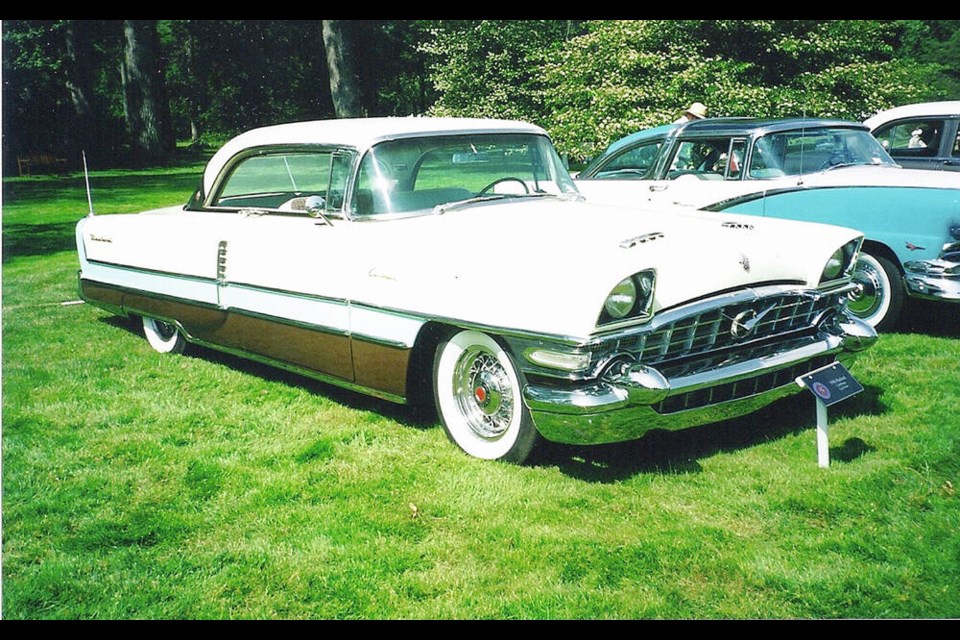It’s more than 60 years since the last car bearing a Packard badge rolled off the assembly line, but in spite of this, the ex-owners who are left still remember and value them as fine automobiles.
Packard’s roots were planted in the late nineteenth century when James W. Packard of the New York and Ohio Co. in Warren, Ohio, manufacturers of electrical equipment, purchased a new 1898 Winton from Winton Motor Carriage Co. of Cleveland, Ohio. It suffered many problems and when brought to Alexander Winton’s attention, Packard was haughtily informed that if he could do better he should build his own car.
As a mechanical engineer Packard accepted the challenge. By November, 1899, he and brother William, also an engineer, and some ex-Winton employees completed the Model A. The buggy-inspired two-passenger automobile had wire wheels, “spade handled” steering tiller and under-seat, horizontal, one-cylinder engine. It also had Packard’s patented automatic spark advance.
It was offered for sale and sold quickly, prompting Packard to build three more for the first North American Auto Show in New York City in 1900.
All three sold and Packard was in the car business. It began as a division of the electrical company until 1901, briefly became Ohio Automobile Co., and in 1902, Packard Motor Car Co.
Packard was progressive, adopting features like a steering wheel, H-gated gearshift and foot operated accelerator. Its buggy heritage was soon replaced by a “regular” automobile layout powered by two and four cylinder engines. Legend has it that Packard was so confident in his cars he urged potential customers to “ask the man who owns one.” It became a long time Packard slogan.
A wealthy Detroiter named Henry B. Joy was impressed enough with his Packard’s quality that he formed an investment consortium to expand Packard Motor Car Co. and relocate it to a new Detroit factory.
James Packard stayed in Warren, and although remaining with Packard, Mr. Joy’s expansionist mood made him increasingly uncomfortable. He relinquished the presidency to Joy in 1909, and his board chairmanship three years later.
The company flourished and Packards distinguished themselves in speed and endurance tests. In a stroke of irony, Packard’s 1903, 61-day cross-continent drive broke Winton’s record by two days. The speedy Packard “Grey Wolf” achieved 125 km/h (77.6 mph) on Ormond Beach, Florida In 1904. The Model L introduced a yoke-shaped radiator and hexagonal hubcap indentation, both of which became famous Packard identifiers.
The Model Thirty introduced in 1907 and continued for five years consolidated Packard’s reputation for quality and performance.
Packard’s 1911 six put Packard clearly among the elite of American automobiles. Its reputation for engineering and luxury made it, along with Peerless and Pierce-Arrow, one of the “Three Ps of Prestige.”
In 1915 Packard’s chief engineer Jesse Vincent stunned the world with the Packard “Twin Six,” the first series production V-12 engine. It eclipsed the prestige of Cadillac’s 1915 V-8.
Vincent’s V-12 experience made him an invaluable contributor to the outstanding First World War Liberty V-12 aircraft engine. Packard became a prominent aircraft engine builder, including the famous Rolls-Royce Merlin during both world wars.
By 1923, Packard decided its V-12 was too expensive and went to sixes and eights. It stayed with these until 1929 when it began concentrating on straight-eights.
Despite the 1930s Depression, Packard felt obliged to counter Cadillac’s 1930 V-12 and V-16 engines that had reclaimed the prestige title. In 1932 Packard introduced a new Twin Six V-12, re-named the Twelve in 1933, which it built until 1939.
During the 1930s Depression, Packard produced some of its most elaborate and beautiful cars bodied by prestigious coachbuilders like LeBaron, Rollston and Brunn.
Shrinking sales of luxury cars during the Depression forced Packard to produce the less expensive 120 model (120 inch wheelbase) in 1935, thrusting Packard into the medium price field. Although the 120 led to a 1937 Packard production record, it and later “Junior Packards,” including sixes, eroded Packard’s prestige. It never fully recovered.
Following Second World War work, Packard introduced freshened pre-war designs to a car-starved market. A new model came in 1948, followed in 1949 by Packard’s “Ultramatic” automatic transmission.
Another restyling appeared in 1951, and then in 1954 under pressure from the Big Three (General Motors, Ford and Chrysler), Packard merged with Studebaker to become Studebaker-Packard Corp.
Packard finally introduced an overhead valve V-8 engine for 1955, along with a new suspension with interconnected longitudinal torsion bars and self levelling. It gave Packard sales a small but short-lived boost, but when sales sank to just over 28,000 1956 models Studebaker-Packard discontinued the last real Packards.
The Packard name continued for two more years as re-badged, not very attractive Studebakers. The Packard name disappeared in 1958, a sad end to a once grand marque.



